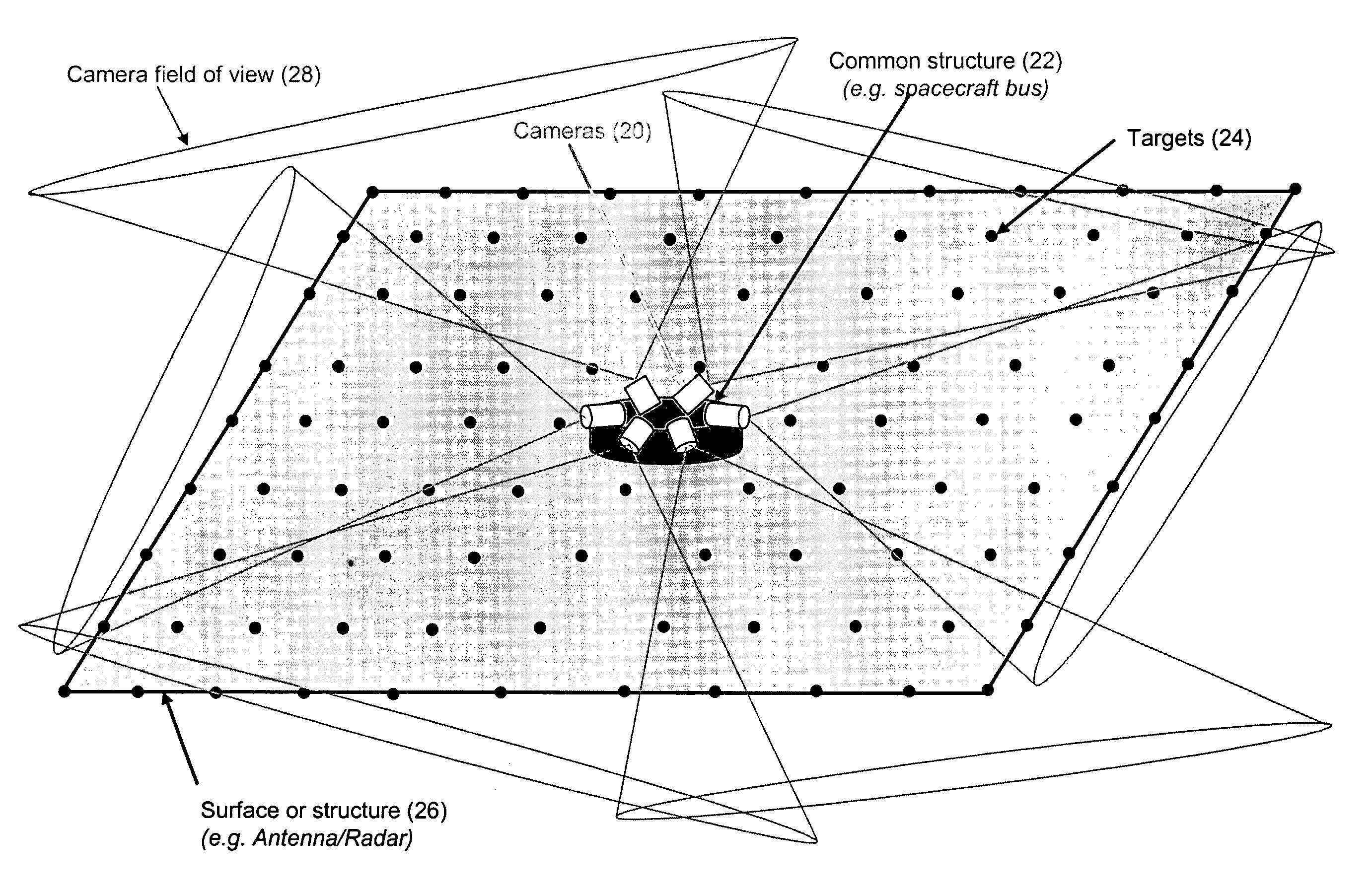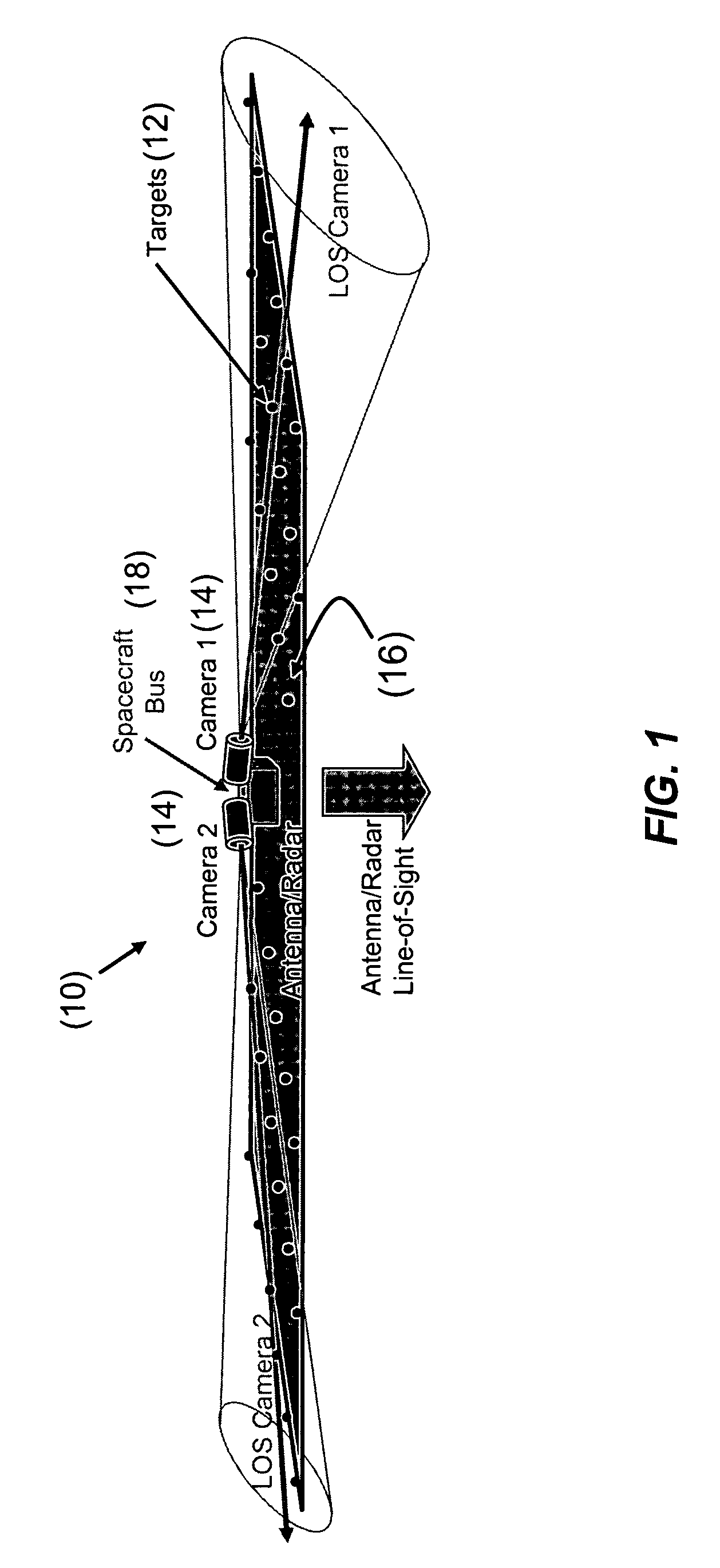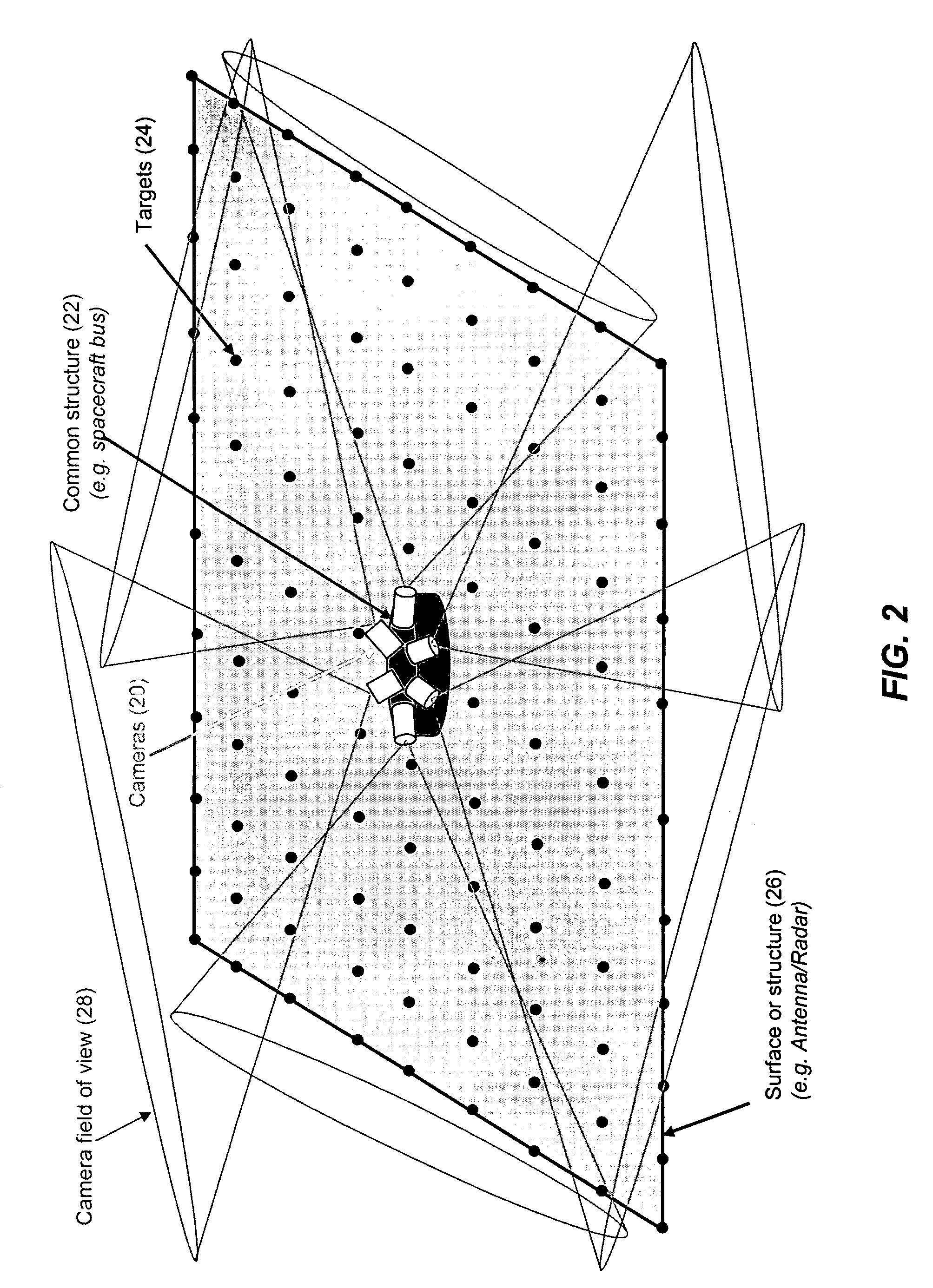Shallow angle shape sensor
a sensor and angle angle technology, applied in the field of shape determination, can solve the problems of low sensitivity of the measurement to the quantity of interest, introduce additional complexity, and scan system introduce performance limitations, and achieve the effects of low sensitivity, high resolution and large area
- Summary
- Abstract
- Description
- Claims
- Application Information
AI Technical Summary
Benefits of technology
Problems solved by technology
Method used
Image
Examples
Embodiment Construction
[0036]The present invention in the form of one or more exemplary embodiments will now be described. In one embodiment, the system (herein referred to as the “Shallow Angle Shape Sensor” (SASS) system) utilizes a machine vision system with cameras and targets located on the surface for which the shape is to be determined. With the understanding that deflections normal to the plane of the surface are dominant and sufficient to determine the shape of the surface, the system uses sensor devices, such as, video cameras, located near the plane of the surface and at a shallow angle with the surface to be measured to receive information from the targets.
[0037]FIG. 1 illustrates a system 10 representing an embodiment of the present invention. As shown in FIG. 1, the system 10 includes a number of targets 12, two (2) video cameras 14 mounted on a spacecraft bus 18, and a large structure having a planar or quasi-planar surface 16, such as, a radar antenna. The targets 12 are mounted on the bac...
PUM
 Login to View More
Login to View More Abstract
Description
Claims
Application Information
 Login to View More
Login to View More - R&D
- Intellectual Property
- Life Sciences
- Materials
- Tech Scout
- Unparalleled Data Quality
- Higher Quality Content
- 60% Fewer Hallucinations
Browse by: Latest US Patents, China's latest patents, Technical Efficacy Thesaurus, Application Domain, Technology Topic, Popular Technical Reports.
© 2025 PatSnap. All rights reserved.Legal|Privacy policy|Modern Slavery Act Transparency Statement|Sitemap|About US| Contact US: help@patsnap.com



